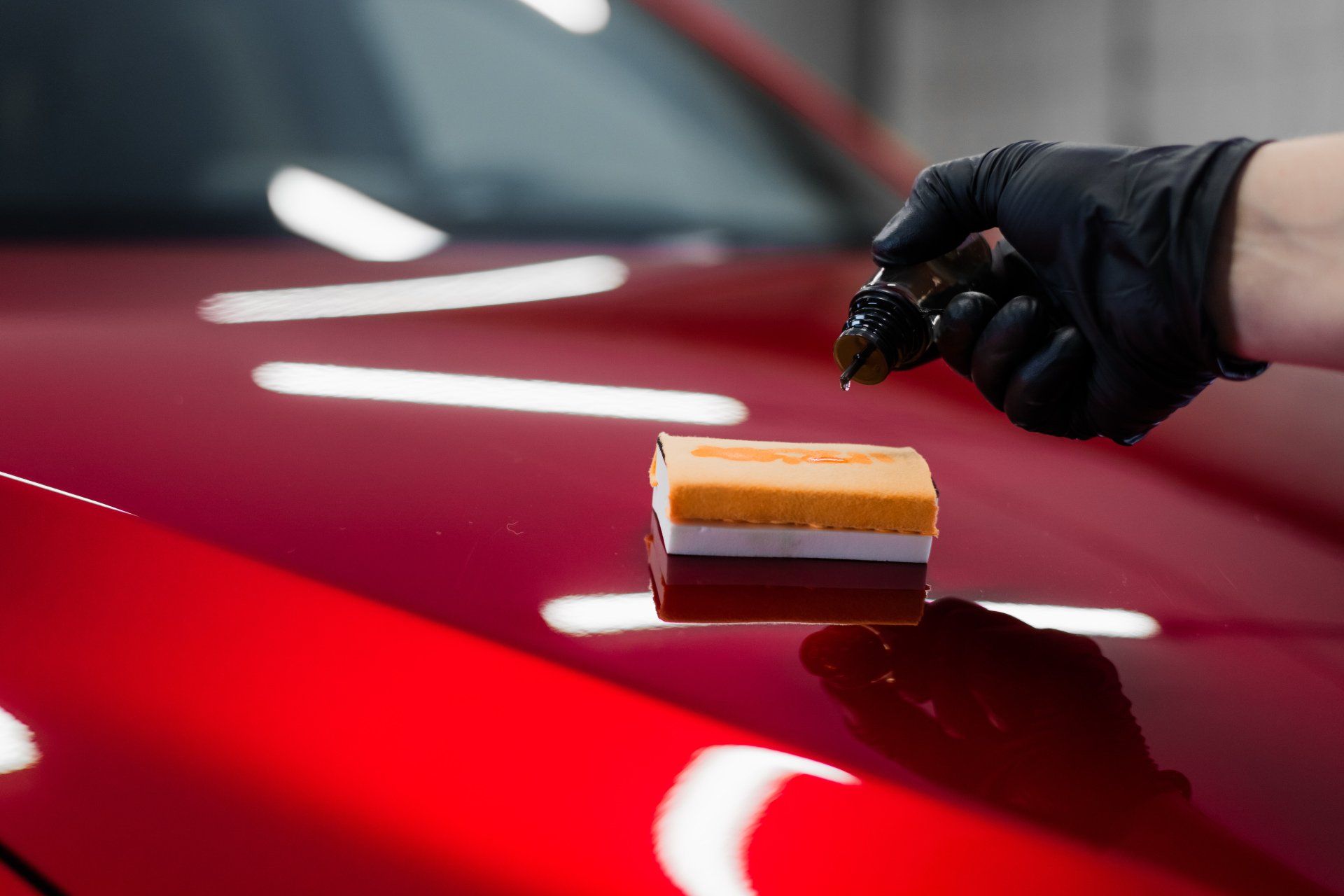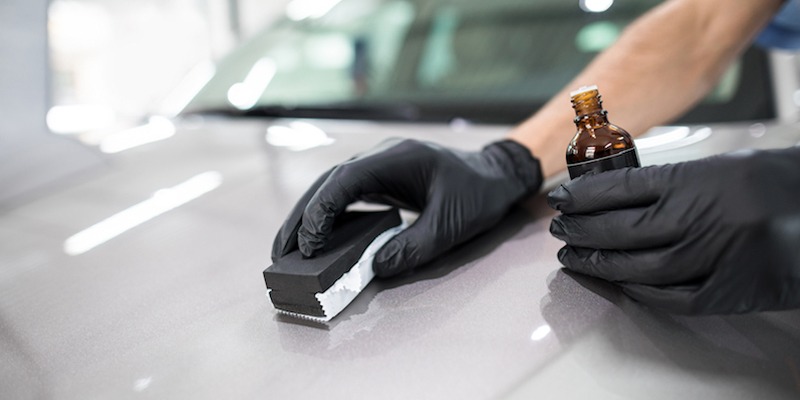How Ceramic Coating Can Protect Your Automobile from Environmental Damage
How Ceramic Coating Can Protect Your Automobile from Environmental Damage
Blog Article
The Significance of Ceramic Coating: Safeguarding Your Vehicle's Outside With Precision
In an age where keeping the useful and aesthetic stability of your lorry is paramount, ceramic finish emerges as a critical option. With its unique bonding properties, ceramic finish offers a level of protection that much surpasses standard waxing methods.
Benefits of Ceramic Coating
When it pertains to protecting a car's aesthetic appeal, ceramic coating supplies considerable benefits. This innovative protective layer gives a resilient guard versus environmental contaminants, including dust, crud, and hazardous UV rays. By forming a semi-permanent bond with the automobile's paint, ceramic finishings effectively stop oxidation and fading, ensuring that the auto preserves a shiny, showroom-like coating for an extended period. This not just boosts the vehicle's visual allure but additionally contributes to its long-lasting worth.
Along with its protective qualities, ceramic finishing provides exceptional hydrophobic homes, triggering water and other fluids to grain off effortlessly. This attribute streamlines the cleansing process, as dust and debris are less likely to adhere to the surface, minimizing the frequency and initiative required for upkeep. The coating's resistance to chemical spots from acidic contaminants like bird droppings and tree sap is an additional noteworthy benefit, minimizing potential paint damages.
Ceramic finishes likewise enhance scratch resistance, giving a layer that can soak up small abrasions and swirl marks. This feature is especially valuable in maintaining an immaculate surface area, reducing the likelihood of visible blemishes and preserving the integrity of the auto's paintwork over time.

Just How Ceramic Finish Works
Understanding the mechanics behind ceramic finishing reveals its efficacy as a protective remedy for automobiles. Ceramic coatings are essentially fluid polymer applications that chemically bond with an automobile's manufacturing facility paint, developing a protective layer. This layer works as a barrier versus ecological impurities such as ultraviolet, grime, and dirt rays, which can deteriorate a vehicle's exterior gradually. The vital part in ceramic covering is silicon dioxide (SiO2), which originates from quartz crystals and is recognized for its phenomenal hardness and longevity.
Application of ceramic layer includes a careful procedure. This guard enhances the vehicle's gloss and hydrophobic buildings, helping with simpler cleaning by causing water and impurities to grain and slide off effortlessly.
Additionally, the finishing's molecular structure offers resistance to small scrapes and chemical spots. Unlike waxes or sealants that rest on top of the paint, ceramic finishings incorporate with the surface, providing durable defense. This integration is essential to its performance, ensuring the automobile's coating remains excellent for years.
Comparing Ceramic Coating to Alternatives
In the realm of auto protection, ceramic finish stands as a formidable option when compared to conventional choices such as waxes and sealers. While waxes provide a short-term shiny surface, usually lasting just a few weeks to months, ceramic finishes provide a longer-lasting service, typically sustaining for many years. This resilience is credited to the chemical bonding that happens when ceramic coverings are applied, forming a solid layer that is resistant to environmental hazards.
Contrastingly, sealers, although more resistant than waxes, still disappoint the robust security offered by ceramic finishings. Sealants can generally last for approximately a year, supplying a synthetic shield versus particular aspects. They lack the premium hydrophobic buildings and UV security that ceramic coverings deliver.
Furthermore, ceramic coatings provide improved scrape resistance, which neither waxes neither sealers can efficiently match. In summary, while typical waxes and sealants provide click here to find out more fundamental defense, ceramic coverings provide a comprehensive, long-term service that substantially boosts and maintains the vehicle's outside finish.
Application Process Discussed
Using ceramic layer to an automobile requires a meticulous procedure to make sure ideal results and durability. Once cleaned, the lorry is dried out and polished to eliminate any kind of blemishes, as any type of existing swirls or scrapes can end up being a lot more noticable after the covering is applied.
Adhering to surface area prep work, the application of the ceramic layer begins. The coating is generally used in a climate-controlled atmosphere to stop dust fragments from choosing the freshly cleaned up surface. Utilizing an applicator pad, the ceramic finish is used in small areas to make sure even coverage. It is important to comply with the producer's standards concerning the appropriate healing time and application thickness.
After application, the layer needs a details treating duration, throughout which the lorry ought to be secured from water and contaminants. This curing process can differ relying on the item yet typically varies from 24 to 2 days. Ultimately, this in-depth procedure is essential in achieving a glossy and durable coating.
Upkeep Tips for Durability
To keep the longevity of a ceramic finishing, adherence to a self-displined maintenance routine is vital. Normal washing is extremely important; use a pH-neutral automobile hair shampoo and soft microfiber gloves to avoid abrasions. Prevent automatic car washes, as their severe brushes can endanger the finishing's stability. Instead, select a hand laundry to make sure comprehensive yet gentle cleaning.
Post-wash, drying the vehicle with a clean microfiber towel avoids water spots that might weaken the covering in time. Additionally, use a ceramic finish booster every few months. These boosters reinforce the hydrophobic residential properties and improve the finishing's protective capacities, guaranteeing it remains reliable against contaminants.
Maintain in mind that parking places play an important role in upkeep. ceramic coating. Whenever possible, park in shaded areas to minimize UV direct exposure, which can slowly weaken the layer. For long-lasting storage, take into consideration utilizing an auto cover for included protection versus environmental components
Conclusion
In conclusion, ceramic finishing serves as a vital protective layer for lorry outsides, using long-lasting defense against environmental elements such as dirt, gunk, and UV rays. Understanding the application process index and adhering to maintenance recommendations are necessary for optimizing the long life and performance check it out of ceramic layer.
When it comes to maintaining an automobile's aesthetic appeal, ceramic covering offers significant advantages. By forming a semi-permanent bond with the lorry's paint, ceramic coatings properly protect against oxidation and fading, making certain that the auto maintains a glossy, showroom-like coating for an extensive duration. Ceramic finishings are essentially liquid polymer applications that chemically bond with an automobile's manufacturing facility paint, developing a protective layer. In recap, while typical waxes and sealers use fundamental defense, ceramic coatings offer a detailed, long-lasting service that considerably enhances and maintains the vehicle's exterior finish.

Report this page